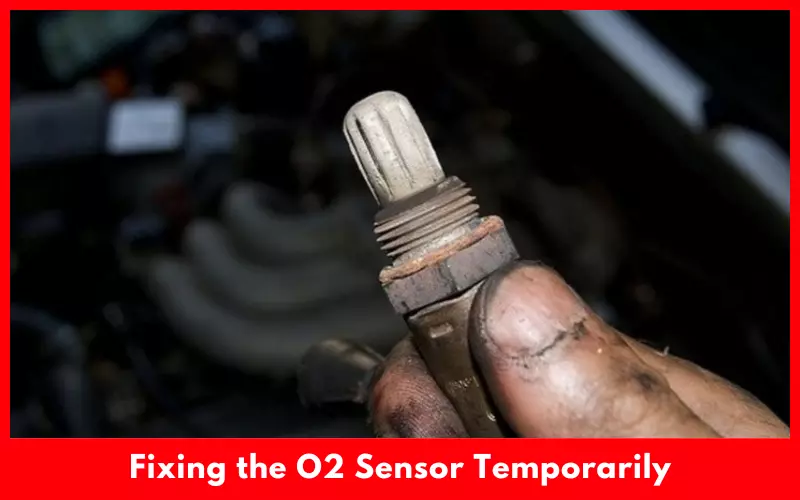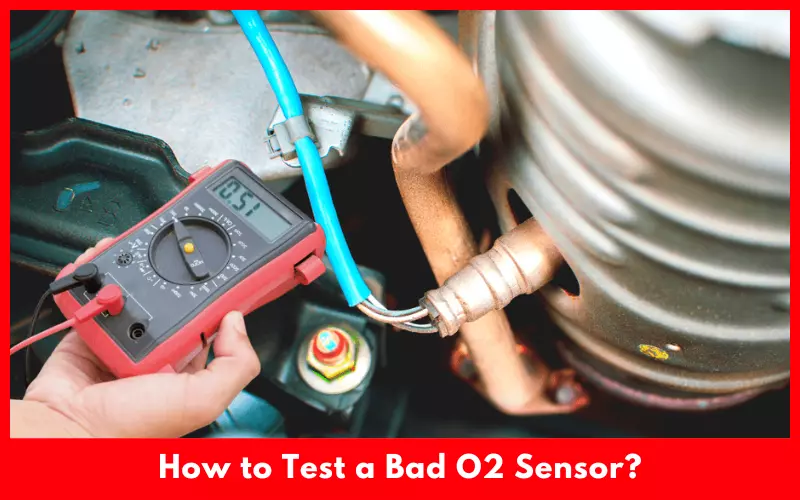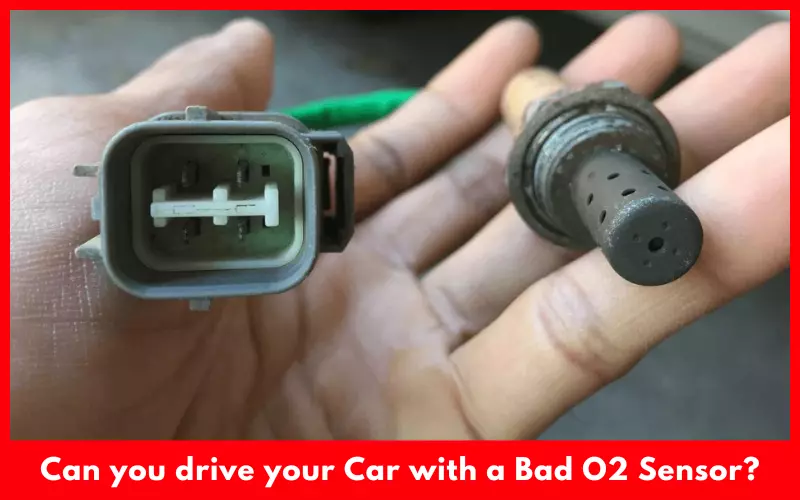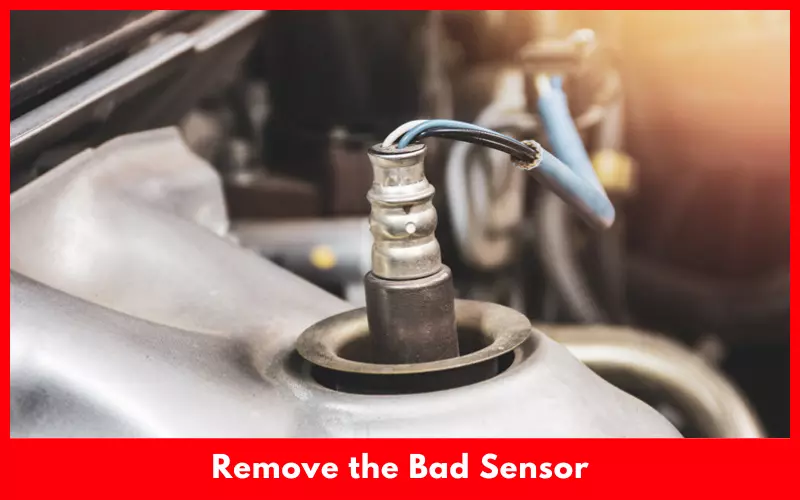Do your car’s O2 sensor malfunctioning but don’t have enough time to visit an auto repair shop? Looking for a temporary fix for bad O2 sensor to disappear the check engine light? Replacing the faulty O2 sensor with a dummy O2 sensor can be your temporary solution.
This’ll deactivate the warning light and provide you some valuable time to visit the mechanic shop for a permanent fix while preventing causing further damage. However, you should learn how to replace a bad O2 sensor and do it yourself as it needs to replace every 30,000 to 60,000 miles.
Article Summary
Can you Fix Bad O2 Sensor Temporarily?
The oxygen sensors or O2 sensors control the emissions control system of a vehicle. It measures the exhaust stream’s oxygen and delivers the information to ECM so the air-fuel ratio ensures optimum emissions and performance. A bad O2 sensor can cause high fuel consumption, decreased engine power, rough idling, or black exhaust fumes.
Though replacing the faulty sensor is recommended for a permanent fix, you can fix it temporarily by using a dummy O2 sensor in an emergency. This fake sensor will let you drive the vehicle without experiencing a bad O2 sensor sign and keep the warning light deactivated.
It’s a cost-efficient and immediate solution for getting the car back on the road without waiting for time-consuming and expensive repairs. Temporary fixes for bad O2 sensors also help prevent your car from causing further damage and provide you valuable time to replace the faulty O2 sensor.
Guides for Temporary Fix For Bad O2 Sensor
A fake sensor can receive readings like the original one and transmit the information to the computer. Since the O2 sensor is a crucial part of a car’s emissions control system, the dummy sensor isn’t the eventual replacement of the O2 sensor.

Though fixing a faulty O2 sensor temporarily won’t let you run smoothly, it’ll deactivate the check engine light. So until you don’t replace the sensor, follow this process to keep the sensor functional:
- Cool down your car and detach the negative wire from the battery terminal.
- Pull the car using a jack so you can get easy access underneath the vehicle.
- Find out the oxygen sensor that should be placed near the catalytic converter. Unplug the oxygen sensor, squeeze the wiring tab, and turn the sensor counterclockwise to remove it properly.
- Insert the fake sensor and rotate it clockwise until it makes a click sound. Then connect the wirings with the sensor.
- Lower your vehicle and connect the negative cable to the battery terminal. Turn on the engine and check if the check engine light disappeared or not.
How Bad is a Faulty Oxygen Sensor for a Car?
The O2 sensor informs a car’s computer about the available amount of oxygen so it can calculate the combustible amount of fuel. If the oxygen sensor malfunctions, your car may get worse mpg and the tailpipe can get damaged.
It can also cause your car’s engine to starve of fuel and the accelerator may suffer. The catalytic converter may also wreck. So, a bad O2 sensor isn’t the thing that you can avoid. Even an O2 sensor isn’t expensive to replace as costs around $20 to $50 depending on your car’s make and model.
However, going to a car dealership can cost $500. Instead, find a licensed auto repair shop to make the job done. Since O2 sensors need to replace every few years, learning the replacement process and doing it yourself will be wise.
How to Test a Bad O2 Sensor?
You should notice the check engine light if anything goes wrong with the O2 sensor. You can also tell if the O2 sensor needs to be repaired or replaced by using an OBD II. OBD II-equipped cars sold in the past 15 years in the united states that have diagnostic connectors.

If the check engine light comes on, use an OBD II reader to get the error codes. If anything is wrong with the oxygen sensor, the reader should show codes between P0130 to P0167. Check the number on the reader’s instruction manual to get detail.
Another way to troubleshoot the O2 sensor is using a voltmeter. Its voltage range varies between .2 to .8 volts or 200 to 800 millivolts. After connecting a voltmeter to your vehicle, if you notice the reading of the sensor is stalled in one position, it failed. If the reading switches between high and low abnormally, it’s also a sign of a faulty sensor.
Most cars have two O2 sensors that you can also check physically. One oxygen sensor is placed on top of the intake manifold that is easy to remove. But you have to lift the car and crawl under it to get the other sensor as it is placed between the catalytic converter and exhaust manifold.
Can you Drive your Car with a Bad O2 Sensor?
Yes, you can drive your vehicle with a bad O2 sensor only for a while. But driving for a long time can damage several components of the emission management system, particularly the catalytic converter.

Even, the longer you’ll drive with the faulty oxygen sensor, the worse damage it’ll bring. So you can experience poor acceleration, rough idling, and engine misfire. Your car may also fail the mandatory emission test that needs to perform every two years in some states like California.
If the O2 sensor malfunctions, the engine will stall and shut off immediately. It’ll also disturb the air-fuel ratio and reduce the power production of the engine. The engine starts turning off periodically is a sign of engine failure. If so, you must stop driving the car to avoid further damage.
When should you replace my Car’s O2 Sensors?
It depends on the make and model of the car and the amount of fuel the engine loses. Expert mechanics recommend changing the O2 sensor of early model cars per every 30,000 miles which is 60,000 miles to 130,000 miles for the 80s older models. If you notice check engine light and determine the O2 sensor has failed, don’t delay to replace the sensor.

Don’t replace the O2 sensor unless you get a check engine light. If you feel something wrong with the O2 sensor, go to an auto repair shop, and scan for error codes. If it’s needed to replace the oxygen sensor to fix error codes, replace the sensor. Below are some signs that indicate a faulty O2 sensor that requires replacement:
- Active check engine light
- Difficulty in starting the car
- High fuel consumption
- Rough idle
- Poor acceleration
- Spark plugs misfiring
- Sulfur smell or black smoke from the exhaust
How to Replace Bad Oxygen Sensor?
If you have no other way than replacing the bad O2 sensor and decide to learn the process so you can replace it whenever required, read below:

Find the Error Code
Before attempting to replace the O2 sensor, make sure it’s damaged and must need replacement. To do this, use an OBD scanner and read the codes that you’ve got.
Prepare the Vehicle
The sensor is placed close to the exhaust system which gets extremely hot. So let the engine cool for around 30 minutes and then start the process. Lift the vehicle using a jack so you can get underneath it for easier access to the O2 sensor.

Remove the Bad Sensor
Locate the two sets of O2 sensors that are usually placed close to the engine compartment’s motor and catalytic converter. To remove the sensor, push down the small tab found on the plug’s end and pull back the plug that is attached to the outlet.

Spray penetrating oil on the sensor if it wears out and becomes hard to remove. Then use a ratchet wrench to unscrew the sensor.
Install a New O2 Sensor
Buy a new oxygen sensor that is compatible with your car and add some anti-seize to it. Then fit the sensor’s tip into the exhaust’s hole and make sure it’s centered properly. Rotate it clockwise with your hand and then a wrench to tighten the sensor firmly. Re-connect the electric connector to the port placed near the exhaust.

Turn on the Vehicle
Finally, start your vehicle to check if the warning light is disappeared. After replacing the O2 sensor, your car should run more smoothly and burn less fuel.
FAQs
How long can you drive with a broken oxygen sensor?
If you can start the engine with a bad oxygen sensor, you can drive the car for a couple of days. But ignoring the issue for a long time can clog the catalytic converter due to consuming excessive fuel.
How to prevent the O2 sensor from getting damaged?
To keep your O2 sensor in optimum condition and prevent damage, avoid using low-quality gasoline. Refill the fuel before it drops down to the recommended level. Routinely service your car particularly the air filter and spark plugs by an expert mechanic.
Does cleaning the O2 sensor restore its performance?
Cleaning can’t restore the O2 sensor’s functionality and it isn’t a recommended method. Even there is no special O2 sensor cleaner available. You shouldn’t also clean the O2 sensor using an aerosol cleaner or wire brush.
Final Words
Though there is a temporary fix for bad O2 sensor but it isn’t a preferable method. The temporary method can only bypass the check engine light but won’t prevent causing decreased fuel efficiency and the car’s reduced performance.
But if you don’t have enough time to visit an auto repair shop and want to disappear the warning light, apply the temporary fixing method. Then bring the car to a mechanic within a week to avoid further damage.

